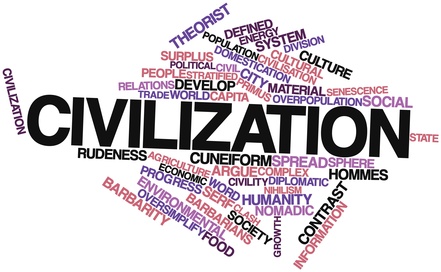 The Simulating Religion Project (SRP) is designed to be an umbrella project for a variety of subprojects that apply computer modeling and simulation techniques to the scientific study of religion. Its pretigious Board of Advisors guides the IBCSR team in all of the SRP subprojects. To date, four subprojects have been launched and several others are in the planning stages. This update article presents news about SRP as its various subprojects unfold. You can obtain more detailed information from pages devoted to individual subprojects, such as the Modeling Religion Project (MRP, 2015-2018) and the Modeling Religion in Norway Project (MODRN, 2016-2019).
The Simulating Religion Project (SRP) is designed to be an umbrella project for a variety of subprojects that apply computer modeling and simulation techniques to the scientific study of religion. Its pretigious Board of Advisors guides the IBCSR team in all of the SRP subprojects. To date, four subprojects have been launched and several others are in the planning stages. This update article presents news about SRP as its various subprojects unfold. You can obtain more detailed information from pages devoted to individual subprojects, such as the Modeling Religion Project (MRP, 2015-2018) and the Modeling Religion in Norway Project (MODRN, 2016-2019).
History of SRP
Phase 1: Costly Signaling and Extremist Violence
SRP began in 2010 with an attempt to apply agent-based modeling techniques in a costly signaling conceptual framework to answer the questions of whether and how religious groups that impose high costs on their members can survive in a wider social environment. The resulting model showed that costly groups can achieve stability. This generalized a result from Henrich (2009) showing that an entire population can achieve equilibrium around high-cost beliefs and practices under certain circumstances. Henrich used a population evolutionary model that did not allow for subgroups, but it was an elegant result nonetheless. Our result was more realistic and possessed a different type of elegance. It was published as Wesley J. Wildman and Richard Sosis (2011), "Stability of Groups with Costly Beliefs and Practices," Journal of Artificial Societies and Social Simulation 14 (3) 6.
Phase 2: Modeling the Neolithic
In July 2012, Wesley Wildman and LeRon Shults began a collaboration with the scientists involved in the Çatalhöyük archeological site in Turkey. The project is to build simulations of the agricultural transition and the possible roles of religion in that drawn-out process, using data from Çatalhöyük to calibrate and validate the simulation. The first model was completed in 2015, to be published in 2016. Other models are in development.
Phase 3: Modeling Religion Project
October 2012: Wesley Wildman attended the fifth "Epistemological Perspectives on Simulation" conference in search of partners who might be interested in collaborating on building a simulation platform that researchers could use to study religion even if they lacked any programming experience. This venture yielded parts of a project team and inaugurated a collaboration between IBCSR and the Virginia Modeling, Analysis, and Simulation Center (VMASC) at Old Dominion University in Virginia. The key VMASC personnal are Andreas Tolk (who has since left VMASC) and Saikou Diallo, who has proved to be an invaluable partner.
January 2013: Wildman and Shults completed the initial specification of what we call the "Civilizational Transformation Model" (CTM). This is a proof-of-concept model intended to show that all of the aspects of human cognition known to be relevant to religion could be harmonized into a complex virtual mind, that such minds could interact to produce social worlds with distinctive styles, and that under certain circumstances these worlds could transform in style (as when people began to migrate away from hunter-gather lifestyles and settle down in or near towns to pursue agriculture and the domestication of animals). Lots of factors are relevant to the transformation of civilizational form. Our central hypothesis is that religion is one relevant factor and CTM shows how it might work.
March 2013: The implementation of the model specification began. In this phase of the project, Wildman works closely with Matthew Haase, one of Saikou Diallo's masters student in VMASC at Old Dominion University.
January 2015: A grant application for the Modeling Religion Project is funded for July 2015-June 2018 by the John Templeton Foundation. Deliverables are an alpha-2-level-prerelease version of a simulation development platform for students and researchers in the scientific study of religion; simulations of the role of religion in transformations of civilizational form; and a variety of outreach activities intended to explain the value of modeling and simulation to experts in the scientific study of religion and the academic study of religion more generally.
July 1, 2015: Three years of funding for MRP begins.
Phase 4: Modeling Religion in Norway
During 2015, LeRon Shults of the University of Agder in Kristiansand, Norway worked with Wesley Wildman at IBCSR and Ross Gore at VMASC to propose a program of research to the Norwegian Research Council. The aim of Modeling Religion in Norway (MODRN) is to use the massive datasets that the Norwegian Government makes available to researchers to build simulations of immigration, assimilation, religiousness, and secularism in Norwegian culture. The funded part of MODRN begins in July 2016 and runs for three years.